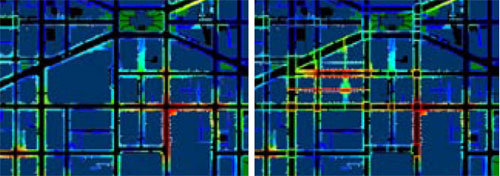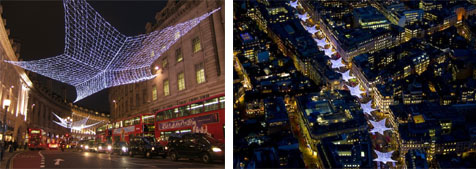Construction of CityCenter DC, the massive mixed-use complex slated to replace the parking lot where the old convention center used to stand, will finally – finally – start construction in April, reports Washington Post.
When CityCenter opens it will bring about 225, 000 square feet of new retail with it. For comparison, the Gallery Place development has about 250, 000 square feet, including the movie theater and bowling alley. Clearly, CityCenter will be a big deal.
The key question, I think, is whether or not CityCenter and Gallery Place will compete as individual destinations, or form a single cohesive downtown shopping district. Can these two massive retail anchors be leveraged to draw shoppers onto the intervening blocks, making them equally vibrant? The city would benefit greatly if so. Not only in the strictest sense of increased sales tax revenue, but also in a more cultural sense: People might start to think of the whole of downtown DC as a destination, as opposed to thinking that way of just a few specific places downtown.
Consider this interesting pair of maps, produced as part of the CityCenter design guidelines (pdf):

Retail visibility near Gallery Place and CityCenter. Brighter colors indicate higher levels of visibility.
The maps show the same section downtown before (left) and after (right) completion of CityCenter. Mount Vernon Square is at the top, Gallery Place is at bottom right, and CityCenter occupies the large block in the left image that’s broken up into several smaller blocks in the right image. The colors indicate the number of entrances to retail establishments visible from that location on the sidewalk, with brighter colors being more. Essentially, the brighter the color, the more retail is on that street.
Unfortunately, it appears that the heaviest concentrations of retail along 7th and I Streets won’t be well connected, mainly because the intersections at H and 8th and I and 7th are too sparsely retailed. There are already large, contemporary buildings at both those intersections, so it’s unlikely the solution will be full redevelopment.
What might work? Complementary signage would help, but probably wouldn’t be enough on its own. Outdoor sidewalk vendors might do the job, but both I and H have sidewalks that are too narrow; the city would have to rebuild the streets to accommodate booths.
One idea I’m fond of would be to take the signage idea a few steps further and install a series of matching public art displays along all the streets in the area, connecting the two nodes. If the art installation were large and visible enough (ceramic pandas probably wouldn’t do the trick), shoppers would soon get the message that seeing that art display meant “shops and entertainment are here, ” which might be enough to persuade more people to walk between CityCenter and Gallery Place.
London’s Regent Street uses this strategy to great effect. As the photos below show, anyone who sees the light installation knows exactly where they are and what to expect.

Regent Street, London. Left image from wiki, right image from Jason Hawkes.
Even that may not be enough, though. There’s really no substitute for providing people with a real destination between CityCenter and Gallery Place.
There’s got to be an answer. Have any ideas?
 Cross-posted at Greater Greater Washington.
Cross-posted at Greater Greater Washington.
October 22nd, 2010 | Permalink
Tags: development, urbandesign













